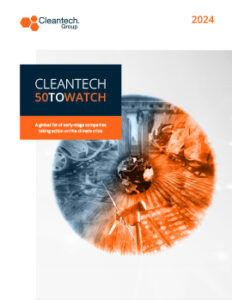The Two Biggest Challenges for Sustainability Teams in Europe
What are corporate’s sustainability hopes, dreams, and aspirations? Who is in the room leading the charge? And who isn’t there and should be? At the beginning of October, I took the Eurostar to Amsterdam (a mode I would highly recommend) to attend the Economist Impact’s 4th Annual Sustainability Week: Countdown to COP29.
As someone who is an intermediary between sustainable start-ups, investors, and corporates, the event gave me some nuanced insight in understanding sustainability drivers of the latter stakeholder in this trifecta – corporates.
These are my takeaways on corporate sustainability drivers and what this means for cleantech and sustainable innovation:
1. Mandatory Sustainability Disclosures: A Capacity-Intensive Process
As the EU Corporate Sustainability Reporting Directive (CSRD) came into force this year and as requirements will continue to rachet up over the next 4-5 years, reporting will consume the time and resources of corporate sustainability teams. If sustainability teams are under-resourced, these risks will be bogging them down in regulatory red tape rather than enabling them to take action to improve the company’s sustainability and resilience.
A panel titled, “Easy as A, B, CSRD: Mastering the Regulation Plaguing CSOs,” highlighted these challenges and emphasized the labor, capacity, and expertise supply gap which multi-national corporations are experiencing as they’re navigating differing requirements from mandatory disclosures across the globe.
Leveraging Technology and Innovation: To meet these requirements efficiently, many companies are turning to external innovators with specialized software tools, e.g., Normative, Novisto, and Osapiens, whom I met at the event. Automating data collection and reporting processes will be critical to managing these complex demands without overwhelming internal teams. These companies are poised to scoop up the additional capacity requirements that are needed today.
Corporates can also look to external innovators to bridge the knowledge gap of its staff, such as using learning and e-course providers, like Sustainability Unlocked. External providers can also enable the operationalization of their findings. This elevates disclosures from a box ticking exercise to a systematic and measured roadmap towards corporate sustainability.
The bottom line? Companies must:
- Invest now in internal systems
- Look to streamline processes with technology
- Invest in their sustainability teams in light of these new requirements
2. The Growing Concern Over Nature Loss: Risks and Responsibilities
Alongside mandatory disclosures, the risks of nature loss are becoming an increasingly pressing concern for corporations. These risks are not just environmental but also legal and financial. As society and governments become more attuned to the impact of corporate activity on nature, organizations must take proactive steps to understand and mitigate these risks.
Drivers for Corporates to Act on Nature Risks
- Disclosures of Nature Risks: There is an expectation that nature-risks disclosures will become mandatory following the TNFD framework.
- Legal Risks of Ecocide: In March 2023, the European Parliament proposal included “ecoside” in EU law which would criminalize ‘severe and either widespread or long-term or irreversible’ actions against nature. Ahead of the event on October 2nd, multiple businesses including Patagonia, Ecosia, and Oatly wrote a joint letter to Ursula von der Leyen, the president of the European Commission, to also enshrine ecoside into EU Law.
In February 2024, Belgium became the first EU member state to criminalize ecocide; similar draft laws have been submitted in other European countries including the Netherlands, Catalonia, and Scotland. For corporations, this increases the litigation risks of the unsustainable harvesting of natural resources, habitat change, and pollution, which if enforced well, can be a significant driver for change.
Leveraging Technology and Innovation
- The Need for Expertise: Navigating nature risk and regulation requires expertise, therefore demand for nature risk analytics tools is growing, and while these tools are still in their early stages, they are riding off the ‘market-creating coattails’ of the climate risk analytics market. Software tools can also help multi-national companies manage fragmented regulations across different countries and industries.
- Uncertainty Around Biodiversity Credits: One emerging area of debate is the potential for biodiversity credits. However, key questions remain about whether these credits can be effectively operationalized. Unlike carbon credits, where one ton of CO2 can be offset by another, nature cannot be compensated in the same way. Nature X cannot be compensated by Nature Y. Instead of functioning as offsets, biodiversity efforts should be seen as insets, meaning companies should focus on restoring the historic damage they’ve caused, rather than using biodiversity credits to justify current negative impacts.
The evolving landscape of sustainability reporting and nature risk management presents both challenges and opportunities for businesses. Over the next few years, companies will need to dedicate significant resources to understanding and complying with mandatory disclosures and address the risks of nature loss – while not losing focus to mitigate and adapt their business model to align with planetary boundaries. By frontloading these tasks, businesses can avoid being stung by these emerging risks, streamline, and automate the boring (but absolutely necessary) reporting bits and become a positive business for the future.
I look forward to discussing this (and more) at the 10th Sustainability Week: Incorporating the Energy Transition Summit on March 10th -12th in London.



